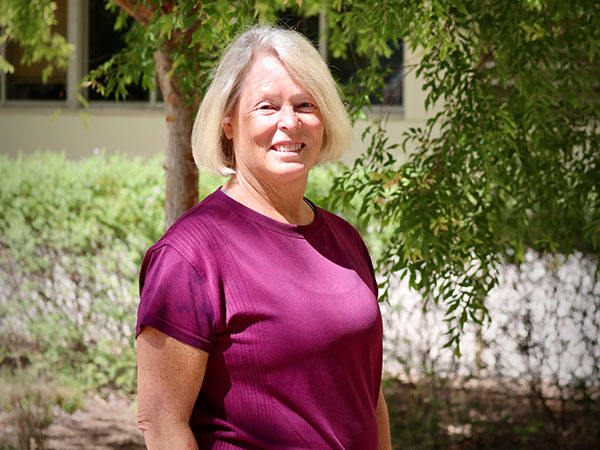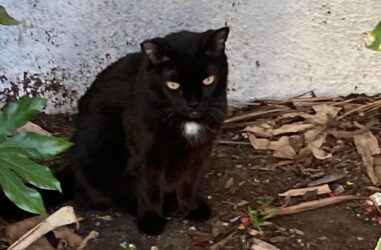
Ingrid Niesman was “always strangely drawn to microscopy,” looking at cells whenever she could. “I still am. I can never sit long enough to see structures, organelles, and how they’re arranged,” she said.
This fascination led her on a path to becoming the director of SDSU’s Electron Microscope Facility.
Timing is Everything
Just by chance, Niesman met her undergraduate adviser for the first time right when he needed an assistant to help to prepare and analyze images with an electron microscope. She started working with him and was hooked on learning everything she could.
After graduating with her bachelor’s degree, Niesman went on to earn her master’s degree and managed electron microscopy labs at several universities across the country.
She moved to San Diego with her husband and started working at the Scripps Research Institute, but then her boss died three months in.
“That was the single worst thing that has happened to me career-wise,” Niesman said.
She pivoted to working with new colleagues at UC San Diego, and started research projects with her new mentors, Marilyn Farquhar and George Palade, who would later earn the Nobel Prize. This work led to Niesman’s PhD and her post-doctoral research at pharmaceutical non-profit Calibr.
Then, she saw the job opening for a new Director of Electron Microscope Facility at San Diego State University.
“I took the job to establish course work. I knew I’d be good at it and I knew it’d be a good opportunity,” Niesman said.
Changing Coursework
Niesman aligned with the mission of the facility’s previous directors, and of SDSU, – to balance doing research with instilling the joy of science in generations to come.
“I don’t like the model of doing the work and handing off the data. I believe in the model of teaching people,” Niesman said. “I want to train people and see their path of discovery.”
This drive led her to revise the coursework and sequence of how undergraduates and graduate students learn to use the scanning electron microscope then the transmission electron microscope, which uses a much narrower beam of electrons.
They practice adjusting parameters of the microscopes and preparing samples. Niesman looks forward to the “magical moment” when students get to look at something they worked on, start to finish.
“Not only is it challenging, but it’s so rewarding,” Niesman said.
Caring for Cats
When the COVID-19 pandemic prevented students from coming to campus mid-semester, Niesman had to revise her instruction again. But she also had to balance extra caretaking responsibilities of SDSU’s campus cats.
Niesman campaigned to have access to campus throughout the pandemic so she could feed the three feral cats while other volunteers stayed home due to health concerns. Part of a successful feral cat management program started by John Denune, the cats – Darcy, BJ and Raven (also called Salem) – can be frequently seen around West Commons and Hepner Hall.



In addition to the campus cats, Niesman has two Siamese cats of her own – Uli and Paterson – whose quirkiness inspired her own neurobiology research on the mechanisms underlying a dementia-like syndrome in cats.
The gene that controls the production of melanin, giving Siamese cats their signature fur pattern, is also involved in creating dopamine, which, when disrupted, can lead to Alzheimer’s disease in humans.
Niesman is grateful for the students who helped her analyze samples for this passion project, among the several ongoing projects in materials science, biochemistry, and engineering.
“There’s a lot of good that comes from the EMF. Students have been impacted,” Niesman said. “They’ve learned how the skills they’ve gained integrate into research or a career path.”
Indeed, students Neisman trained have gone on to graduate school and jobs in biotechnology in San Diego and beyond, following her footsteps – or paw prints – to well-balanced lives.
You can support tomorrow’s technicians transforming science with a gift to the Electron Microscope Facility today.